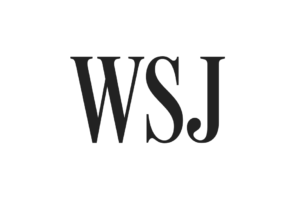
Bloomberg
A Week After Brazil’s Bold Rate Hike, Traders Ask for More
(Bloomberg) — It took just over a week for Brazil’s traders to look past the central bank’s guidance and ask for even more rate hikes.Despite the larger-than-expected increase at the last meeting, the market is now pricing in a full-point hike for May, ignoring an already hawkish pledge from the bank to raise rates by another 75 basis points. The worsening of the pandemic, investors say, may lead the government to spend more, weighing on inflation and forcing officials to be more aggressive.The sharp increase in swap rates only eased on Thursday, when Central Bank President Roberto Campos Neto pushed back on comments that policy makers are behind the curve. He reinforced plans to deliver a “partial” normalization, meaning officials wouldn’t take borrowing costs to a neutral level — neither stimulative or restrictive. Traders reacted by pushing short-end rates down about 10 basis points, paring gains of as much as 45 basis points since the March 17 decision.“Brazilian markets are completely dominated by short-term dynamics,” said Alejandro Cuadrado, head of Latin American currency strategy at BBVA in New York. With the worsening of the pandemic, that means that the panorama is changing quickly, he said.Covid-19 is running rampant in Brazil, damping the outlook for the economy and fueling speculation that the government could extend emergency aid payments and implement other measures to shore up activity. That’s weighing on the outlook for inflation, which blew past the upper limit of the central bank’s target range in mid-March.Read more: Brazil Tops 12 Million Covid-19 Cases as Bankers Urge Action“The market will demand higher risk premia now given the risk of inflation overshooting in a scenario where more cash transfers will be approved and the spending cap breached,” said Daniel Rico, a Latin America currency strategist at RBC Capital Markets LLC in New York.Although officials are signaling a partial normalization, the larger-than-expected rate hike suggests they are willing to go all-in on the inflation fight, meaning they may accelerate the pace of tightening, analysts and strategists say.Brazil’s swap rates are pricing in a total of 450 basis points in rate hikes this year, which would take the Selic to 6.5%. Before the rate decision, the curve implied 420 basis points.“Our initial assumption was that fiscal policy would be a constraint,” said Andres Jaime, the head of Latin America macro strategy at Morgan Stanley in New York. “But the decision suggests that the central bank will prioritize its inflation mandate and will continue to validate higher fiscal risk premium if necessary, moving ahead of the curve.”The increase in swap rates wasn’t only due to local drivers. Brazil also tracked other emerging markets, with swap rates shifting higher in countries from Mexico to South Africa over the past few days amid fears that inflation will accelerate globally.“Expected U.S. economic outperformance in 2021 and 2022 has supported the dollar and steepened EM yield curves,” Bank of America global economist Aditya Bhave wrote in a note Friday. “Brazil, Mexico, Russia and Turkey have been under the most strain.”Inflation WoesBrazil’s monetary authority now forecasts that the consumer-price index will rise 5% in 2021, above the 3.75% target for this year, but still below the upper bound of the range. Throughout the week, banks including Morgan Stanley and Barclays also revised up their estimates for inflation.The nation’s one-year inflation breakeven is still higher than official estimates, standing at 5.44%. Traders say the potentially aggressive tightening plus constant foreign-exchange interventions by the central bank will limit the real’s depreciation, which had been a source of inflation pressure.The deteriorating domestic backdrop also hit the real, which has fallen almost 9% this year, the worst among major currencies. It’s currently trading at 5.70 per dollar, weaker than before the surprise rate move, which was one of the biggest tests thus far for Campos Neto, who took over in 2019.The combination of a weaker currency with higher oil prices, an unanchored fiscal deficit and rising long-term U.S. yields will keep rates under pressure, according to RBC’s Rico.“All of these factors continue to point to a steeper curve,” he said.(Updates with Bank of America’s comment in 11th paragraph and Brazil’s real performance in third to last paragraph.)For more articles like this, please visit us at bloomberg.comSubscribe now to stay ahead with the most trusted business news source.©2021 Bloomberg L.P.



